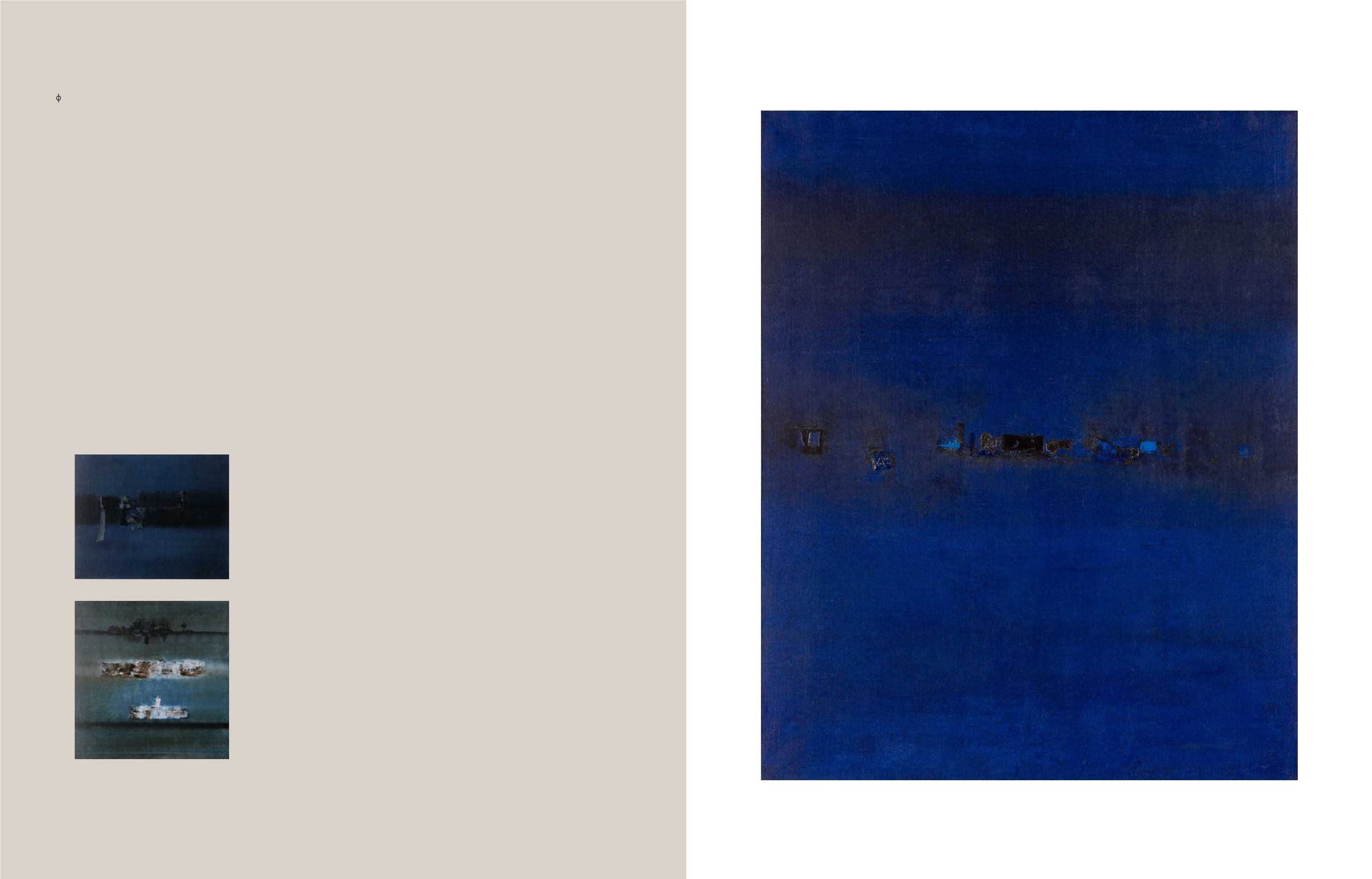

42
43
Vasudeo Santu Gaitonde’s aesthetic vision was rooted in
a deeply meditative sensibility. Although he was loath to
calling himself an abstract artist and disliked being slotted
into any known genres, Gaitonde is undoubtedly one of
India’s foremostmodern abstract expressionists. According
to art historian Gayatri Sinha, “In the dogged fidelity to
an idea and its execution, Gaitonde’s standing in Indian
art is unique, as is his contribution in plotting the graph
of one stream of Indian modernism.” From his modest
beginnings of growing up in a
chawl
in the Girgaum area
of Mumbai, Gaitonde went to achieve great acclaim as a
formidable artist not only in India, but also internationally.
New York Times
art critic Holland Cotter has referred
to him as “a 20
th
‒century Indian modernist who looked
westward, eastward, homeward and inward to create an
intensely personalized version of transculturalism, one
that has given him mythic stature in his own country and
pushed him to the top of the auction charts.” (Holland
Cotter, “An Indian Modernist With a Global Gaze,”
The
New York Times
, 1 January 2015, online)
PROPERTY FROM AN IMPORTANT ASIAN PRIVATE COLLECTION
13
V S GAITONDE
(1924 ‒ 2001)
Untitled
Signed and dated in Devnagari (on the reverse)
1963
Oil on canvas
50 x 40.25 in (127 x 102.2 cm)
Rs 10,00,00,000 ‒ 15,00,00,000
$ 1,587,305 ‒ 2,380,955
PROVENANCE
Estate of Carole Nimmo Bourne, New York
Private Collection, New York
Similar works by the artist, executed in a dark blue
palette around the same time as the present lot.
Untitled
, 1963
Untitled
, 1965
Reproduced from Sandhini Poddar,
V.S. Gaitonde: Painting
as Process, Painting as Life
, New York: The Solomon
R Guggenheim Museum, 2014, pp. 75, 77, pl. 27, 29


















